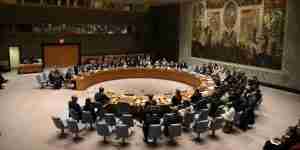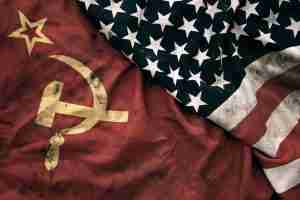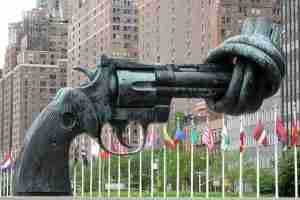International Relations (IR) is the study of how nations interact with one another. Its foundations lie in the emergence of the modern nation-state system. This began with the Treaty of Westphalia in 1648, which ended the Thirty Years’ War in Europe.
The treaty marked the formal recognition of nation-states as key actors in international politics. Before this, Europe was largely under the rule of the Roman Empire, which functioned as a loose confederation.
The rise of nation-states brought a new political order defined by three core features:
- Centralised authority
- Clearly defined territorial boundaries
- Sovereignty
(Sovereignty and territorial integrity are often used interchangeably. They are considered sacred principles in international politics and represent the fundamental national interest of any state.)
1] Nature of Discipline of IR
International Relations (IR) is often called an “American Social Science.” This is because the discipline was largely initiated by American scholars, remains dominated by them, and much of its theoretical framework centres around U.S. foreign policy. Many IR theories were developed with the intent of sustaining US hegemony.
The first chair of international politics was established in 1919 at the University of Wales, named the Woodrow Wilson Chair. The year 1919 marks the end of the First World War—a conflict that could only be resolved with U.S. intervention. After the war, U.S. President Woodrow Wilson proposed several ideas aimed at establishing a “New World Order.”
This New World Order implied the existence of an Old World Order, rooted in the Westphalian system. Before World War I, international politics was not truly global. It was essentially the politics among European powers, as the United States followed a policy of isolationism under the Monroe Doctrine, and much of the rest of the world remained under colonial (European) rule.
2] Phases of International Politics
1st Phase: The Westphalian World Order (1648–1919)
This phase begins with the Treaty of Westphalia in 1648, which marked the birth of the modern nation-state system. International politics during this period was essentially European politics, shaped by the actions of a few great powers. It was an era of frequent wars, where the central concern of states was security through balancing—internally by strengthening military capacity, and externally by forming alliances.
This period is best explained by Arnold Wolfers’ Billiard Ball Model, which likens states to hard, sovereign units colliding in an anarchic system. There were no superpowers or universal actors like the UN; thus, states relied solely on themselves for survival. The international system was multipolar, characterised by no permanent friends or enemies—only shifting alliances based on national interest.
2nd Phase: The Interwar Period and the Liberal Vision (1919–1939)
After World War I, Woodrow Wilson proposed a new world order based on liberal principles to end great power politics. His ideas were captured in the 14 Points Speech. The Key ideas included:
- Establishment of the League of Nations
- Replacing balance of power with collective security
- Promotion of free trade
- Freedom of navigation on the high seas
- Support for democracy
- Recognition of the right to self-determination
These ideas became the core principles of U.S. foreign policy, deeply rooted in capitalist philosophy and aimed at consolidating American hegemony. As a result, the first school of International Politics came to be known as liberalism, often referred to as a set of “peace theories”, since their stated goal was the establishment of enduring global peace.
However, the implementation of these ideas failed. The U.S. did not join the League of Nations due to domestic opposition, leaving its leadership to Britain and France. The rise of fascism and fear of communism led to the appeasement of Germany and Italy. As a result, the League collapsed, and old-style politics—protectionism, alliances, arms race—returned, leading to World War II.
This failure of liberalism gave rise to the Realist School, most notably through E.H. Carr in his work “The Twenty Years’ Crisis”. Realists accused liberals (or idealists) of utopian thinking, unrealistic in a world driven by power politics. This marked the first great debate in IR: realism vs. idealism.
3rd Phase: The Cold War Era (1945–1991)
The end of World War II ushered in a new phase marked by bipolarity and the emergence of superpowers—the USA and USSR. Unlike the great powers of the past, superpowers wielded such dominance that no coalition of other states could challenge them. Smaller states became satellites, losing real sovereignty.
Traditional balance of power gave way to nuclear deterrence, particularly the doctrine of Mutually Assured Destruction (MAD). This changed the nature of international conflict—while large-scale wars were avoided, proxy wars and ideological confrontation defined the era.
The Cold War made international politics truly global, moving beyond its Eurocentric roots. This period also saw the institutionalisation of international relations as an academic discipline.
4th Phase: Post–Cold War and the Rise of Globalisation (1991–2008)
With the collapse of the Soviet Union, U.S. President George H.W. Bush declared the emergence of a “New World Order”. This phase witnessed increased interdependence, global governance, and the spread of liberal democratic norms.
According to Baylis and Steve Smith, international politics transitioned from state-centric geopolitics to geo-centric global politics, where boundaries between domestic and international issues began to blur. This era was defined by globalisation, complex interdependence, and the emergence of non-state actors.
The billiard ball model gave way to the cobweb model, coined by John Burton:
Billiard Ball Model: Proposed by Arnold Wolfers, the model views states as hard, sovereign units operating in an anarchic international system. Each state acts independently, with no higher authority above it. Like billiard balls on a table, states collide based on self-interest, forming shifting alliances and engaging in power politics. This model reflects realist thinking and suits a multipolar world without superpowers or global institutions.
Cobweb Model: John Burton’s Cobweb Model sees states as interconnected through various channels like trade, communication, and international institutions. Unlike the rigid separation in the billiard model, states here are porous and influenced by domestic and global actors. It reflects a world of complex interdependence, where cooperation and shared interests play a central role, aligning with liberal and post-liberal perspectives.
| Billiard Ball Model | Cobweb Model |
| State-centric | Society-centric |
| Single communication channel (state) | Multiple channels of communication |
| States are hard shells | States are porous and interconnected |
| Sovereignty is absolute | Sovereignty is diluted |
Present Phase: Crisis of Liberal Order and Return of Geopolitics (2008–present)
The 2008 Global Financial Crisis marked the beginning of the decline of the liberal world order. Since then, we are witnessing the resurgence of state-centric geopolitics. Events like Russia’s annexation of Crimea in 2014, rising protectionism, increasing nationalism and trade wars, indicate a return to power politics.
Joseph Nye describes the contemporary global order as a “3D Chessboard”:
- Unipolar in military power (dominated by the USA)
- Multipolar in economic power (emergence of China, EU, India, etc.)
- Diffused in cultural and societal power (shared among NGOs, MNCs, religious groups, media)
This indicates a fragmented world order, where no single theory or model fully explains the dynamics at play. IR today is shaped by traditional concerns of security as well as newer issues like climate change, cyber threats, pandemics, and global inequalities.









